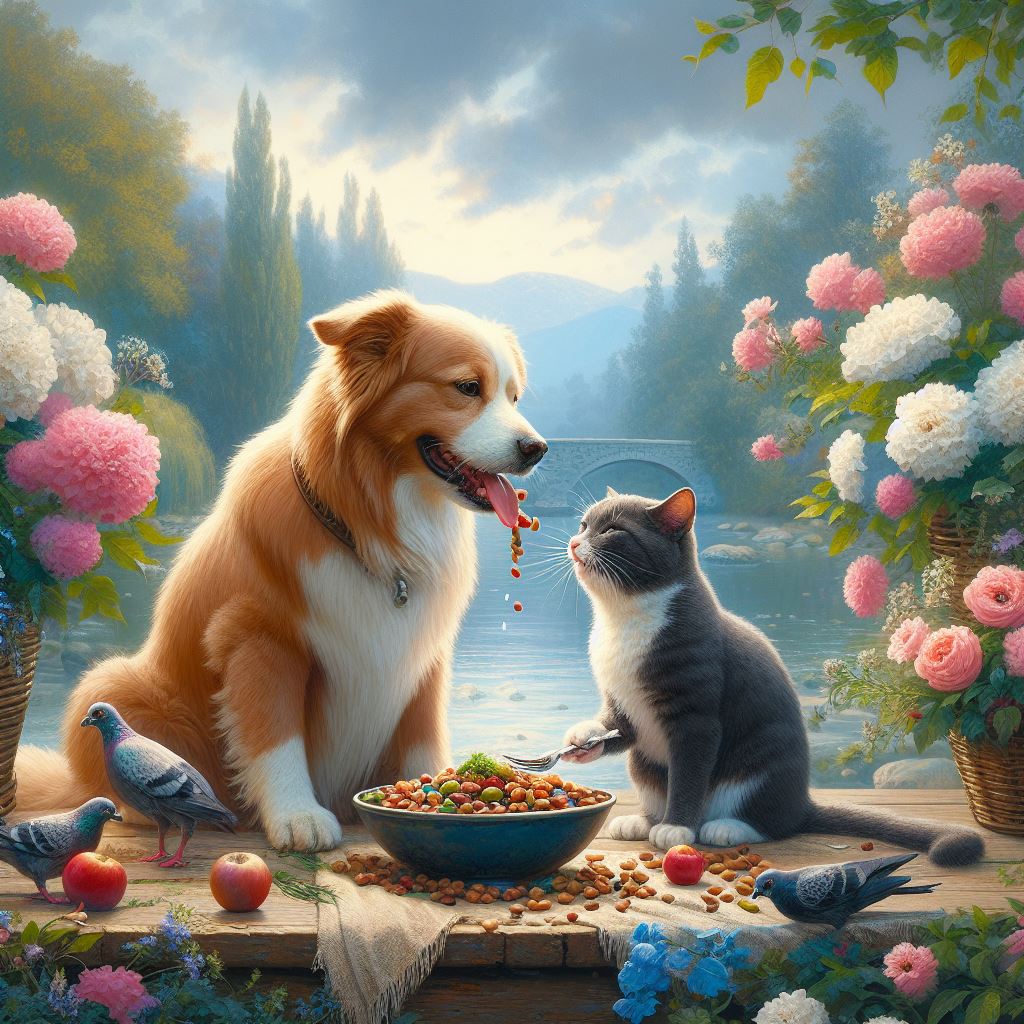How can I switch my pet diet easily? Many pet lovers ask this question on daily bases.
We will try to give you some information regarding this question. Cat and dog food are both types of pet food that provide nutrition and energy for domestic animals.
However, they have different ingredients, formulations and benefits depending on the needs and preferences of each species.
In this paragraph, we will compare some of the main features of cat and dog food, as well as some common brands that offer them.
We will also explain how to identify if your pet is allergic to certain foods and what to do in that case. Moreover, we will give you some tips on how to switch your pet’s diet safely and gradually.
Cat and Dog Food Difference
First, cat and dog food differ in their protein content. Cats are obligatory carnivores, which means they need animal-based protein to survive and thrive.
Therefore, cat food usually contains more meat, fish, or poultry than dog food, and has higher levels of amino acids such as taurine and arginine.
Some popular brands of cat food that are high in protein are Purina, Royal Canin and Whiskas.
Dogs are omnivores, which means they can eat both plant and animal sources of protein.
Therefore, dog food may contain more grains, vegetables, or fruits than cat food, and has lower levels of amino acids. Some popular brands of dog food that are balanced in protein are Pedigree, Iambs and Hill’s Science Diet.
Secondly, cat and dog food have different amounts of fat and carbohydrates.
Cats have a higher metabolic rate than dogs, which means they burn more calories and need more fat to fuel their bodies.
Therefore, cat food typically has more fat than dog food, and more calories per serving.
Some popular brands of cat food that are rich in fat are Meow Mix, Fancy Feast and Friskies.
Dogs have a lower metabolic rate than cats, which means they need less fat and more carbohydrates to maintain their energy levels.
Therefore, dog food usually has less fat than cat food, and more carbohydrates such as rice, corn, or wheat.
Thirdly, cat and dog food vary in their vitamins and minerals.
Cats and dogs have different nutritional requirements for certain vitamins and minerals that are essential for their health.
For example, cats need more vitamin A than dogs, because they cannot convert beta-carotene from plants into vitamin A.
Therefore, cat food often has added vitamin A or liver as a source of this nutrient.
Some popular brands of cat food that are fortified with vitamin A are Sheba or Felix.
Dogs need more vitamin D than cats because they cannot synthesize it from sunlight.
Therefore, dog food often has vitamin D or fish oil as a source of this nutrient.
Fourthly, cat and dog food may cause allergic reactions in some pets.
Allergies are immune system responses to substances that the body considers harmful or foreign.
Some common signs of food allergies in cats and dogs are itching, scratching, licking, hair loss, skin rashes, ear infections, vomiting or diarrhea.
If you notice any of these symptoms in your pet after feeding them a new type of food or brand, you should stop giving them that food immediately and consult your veterinarian.
Your veterinarian can perform tests to determine the exact cause of the allergy and prescribe the best treatment for your pet.
You may also need to switch to a hypoallergenic or limited ingredient diet for your pet to avoid triggering the allergy again.
Fifthly, cat and dog food can be switched safely and gradually if you follow some simple steps.
Switching your pet’s diet too quickly or too frequently can cause digestive problems such as upset stomach or diarrhea.
To prevent this, you should introduce the new food slowly over a period of 7 to 10 days.
You can start by mixing a small amount of the new food with the old food in a ratio of 25% new to 75% old.
Then you can gradually increase the proportion of the new food while decreasing the proportion of the old food until you reach 100% new food by the end of the transition period.
You should also monitor your pet’s appetite, stool quality and behavior during this time to make sure they are adjusting well to the new diet.
In conclusion, answer to how can I switch my pet diet easily? is not very complicated.
Cat and dog food are both designed to meet the specific needs of each pet.
They differ in their protein, fat, carbohydrate, vitamin, and mineral content, as well as their flavor and texture.
Pet owners should always choose the appropriate type of food for their cat or dog
Which is based on their age, size, activity level and health condition.
Some common brands that offer different types of cats and dog food are Purina, Pedigree, Meow Mix.
However, some pets may be allergic to certain foods or ingredient.
Allergies
So it is important to monitor your pet’s health and behavior after feeding them any new food or brand.
If you suspect your pet has a food allergy, you should seek veterinary advice as soon as possible.
Additionally, if you want to switch your pet’s diet, you should do it safely and gradually
By following the steps mentioned above.

